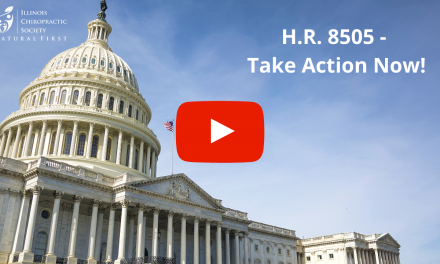
Carpal Tunnel vs. Pronator Teres

When a patient presents with numbness and tingling in their first 3 ½ fingers, most clinicians presume a diagnosis of carpal tunnel syndrome. Without confirming this source of median nerve compression we may be directing our treatment at the wrong culprit. Pronator Teres Syndrome describes the constellation of signs and symptoms that results from compression of the median nerve by the pronator teres muscle near the elbow. It is the second most frequent cause of median nerve compression with features similar to but discernable from its more common distal counterpart, carpal tunnel syndrome (1). Pronator Syndrome (PS) responsible for 9.2% of all cases of median nerve entrapment (2).
The median nerve innervates most of the flexor muscles in the forearm and hand while supplying sensation to the volar forearm and first 3 1/2 digits. The median nerve enters the forearm through the cubital fossa as it passes beneath the bicipital aponeurosis and the arch of the flexor digitorum superficialis muscle. The median nerve’s relationship to the pronator teres is somewhat variable. The median nerve passes between the superficial and deep heads of the pronator teres in 80% of patients (3). The deep head of the pronator teres is not found in approximately 20% of the population (4). Cadaveric dissections have shown the nerve to pass behind or through the deep head of the pronator teres in a small percentage of patients (5).
Pronator Syndrome
Pronator syndrome occurs from entrapment of the median nerve by the pronator teres muscle. It is associated with prolonged or repetitive forearm pronation and finger flexion, i.e., gripping with the palm down. Carpenters, mechanics, assembly line workers, tennis players, rowers, and weight lifters are predisposed to this problem (6). The condition is often associated with excessively developed forearm muscles and is more common in the dominant arm (7,8). The typical age of onset is in the fifth decade, and the condition is four times more common in women than in men (9). Like other neuropathies, patients with diabetes, alcoholism or hypothyroidism are predisposed to this malady.
Pronator syndrome often presents as an aching discomfort in the volar forearm with associated paresthesias into the first three-and-a-half digits. Symptoms of pronator syndrome can mimic those of carpal tunnel syndrome with some important points of differentiation. Both conditions may be exacerbated by repetitive activity. Nocturnal exacerbations are common in carpal tunnel syndrome but notably absent in pronator syndrome (10,11,12). Both are exacerbated by wrist flexion, but the symptoms of pronator syndrome are often increased with resisted or repetitive forearm pronation or supination.
Clinical evaluation of PS demonstrates tenderness to palpation over the pronator teres. Medial epicondyle tenderness is common. Tinel sign may be positive over the proximal anterior forearm in patients whose symptoms arise outside of the carpal tunnel. Tinel sign would be absent at the wrist, and Phalen’s test would be negative in PS patients.
Diagnosing
Orthopedic testing can help differentiate the site of involvement by generating tension on specific potential sites of median nerve compression. The pronator compression test is positive when symptoms are reproduced within 30 seconds of applying deep sustained compression of the pronator muscle. The uninvolved arm should remain asymptomatic. A small study by Gainor demonstrated 100% sensitivity for this test (13).
The pronator teres syndrome test is performed with the patient’s elbow in 90 degrees of flexion. The practitioner stabilizes the elbow with one hand and asks the patient to attempt to pronate his hand against the practitioner’s resistance. The clinician extends the patient’s elbow while holding this resistance. The reproduction of symptoms suggests the involvement of the pronator teres muscle.
Symptoms
Pronator syndrome may be associated with weakness of the muscles innervated by the median nerve, including the flexor pollicis longus, flexor digitorum profundus, and pronator quadratus. Weakness is variable and is often associated with a sensation of grip clumsiness or a weakened pincher grip. Clinicians should assess specific levels of nerve root function to rule out cervical radiculopathy. Symptoms from pronator syndrome and cervical radiculopathy may overlap, but the weakness of the wrist extensors and triceps suggests cervical radiculopathy.
Clinicians should be alert to the possibility of a “double crush syndrome” wherein the median nerve is sensitized from axonal irritation at multiple sites (14). Failure to identify and treat additional sites of compression will likely result in ongoing symptoms. Common double crush partners for median nerve compression include cervical radiculopathy (C6-7), thoracic outlet syndrome, brachial plexus neuritis, carpal tunnel syndrome and entrapment within the cubital fossa beneath the ligament of Struthers, beneath a thickened bicipital aponeurosis or beneath a thickened proximal edge of the arch of the flexor digitorum superficialis.
Radiology
In general, radiographs are of limited value in the diagnosis of neuropathy. Elbow films are warranted in the presence of deformity, supracondylar process, and suspected fracture or neoplasm. MRI may help to identify neurogenic tumors, ganglion cysts, osseous spurs or other anatomical variants. Electrodiagnostic testing is controversial and of questionable value in the diagnosis of pronator syndrome (15).
Treatment
An effective conservative management strategy includes rest, modalities, and nerve gliding exercises. Perhaps the most important aspect of treatment is the avoidance of repetitive forceful gripping. A discussion of workstation ergonomics and specifically avoiding repetitive tasks is essential. Activity modification may be necessary and in severe cases, an elbow splint may be used to maintain 90 degrees of flexion with the forearm in mid-rotation. This splint would be worn for approximately two weeks and would be taken off for range of motion activities.
Ice packs or ice massage directly over the pronator teres muscle may provide benefit. The use of ultrasound and electrical stimulation has shown benefit for the treatment of other nerve pathologies, and their use may be beneficial in the treatment of pronator syndrome. Fifteen minutes of pulsed ultrasound daily has been shown to help more distal sources of median nerve compression. The suggested settings are frequency – 1 MHz; intensity – 1 watt/cm squared; duty cycle – 25% (16).
Good clinical judgment is required to assess the point at which the benefits of soft tissue mobilization outweigh the risks of symptom exacerbation. When the symptoms are no longer acute, stretching and myofascial release of hypertonic pronator teres and wrist flexor muscles is appropriate. Stretching should be performed prior to nerve mobilization. Median nerve mobilization is performed with the cervical spine in contralateral lateral flexion, and rotation while moving the forearm from a flexed-supinated position into an extended-pronated position. Nerve mobilization should not proceed past the point of symptom provocation or exacerbation.
One study demonstrated that 50% of pronator syndrome patients reported resolution of symptoms within four months of initiating traditional care. Surgical decompression of the median nerve is rarely indicated- making Pronator Syndrome another opportunity for astute chiropractors to demonstrate their clinical excellence.
References
1. Lee MJ, LaStayo PC. Pronator Syndrome and Other Nerve Compressions That Mimic Carpal Tunnel Syndrome. J Orthop Sport Phys Ther 2004;34:601-609.
2. Gessini L, Jandolo B, Pietrangeli A. Entrapment neuropathies of the median nerve at and above the elbow. Surg Neurol. 1983;19:112-116.
3. Eversmann WW. Proximal median nerve compression. Hand Clin. 1992;8:307-315.
4. Nebot-Cegarra J, Perez-Berruezo J, Reina de la Torre F. Variations of the pronator teres muscle: predispositional role to median nerve entrapment. Arch Anat Histol
Embryol. 1991;74:35-45.
5. Tulwa N, Limb D, Brown RF. Median nerve compres- sion within the humeral head of pronator teres. J Hand Surg [Br]. 1994;19:709-710.
6. Howard FM. Compression neuropathies in the anterior forearm. Hand Clin. 1986;2:737-745.
7. www.orthobullets.com/hand/6020/pronator-syndrome
8. www.mdguidelines.com/pronator-syndrome
9. Tetro AM, Pichora DR. High median nerve entrapments. An obscure cause of upper-extremity pain. Hand Clin. 1996;12:691-703.
10. Haussmann P, Patel MR. Intraepineurial constriction of
nerve fascicles in pronator syndrome and anterior interosseous nerve syndrome. Orthop Clin North Am. 1996;27:339-344.
11. Rehak DC. Pronator syndrome. Clin Sports Med. 2001;20:531-540.
12. Werner CO, Rosen I, Thorngren KG. Clinical and neurophysiologic characteristics of the pronator syndrome. Clin Orthop. 1985;231-236.
13. Gainor BJ. The pronator compression test revisited. A forgotten physical sign. Orthop Rev. 1990;19:888-892.
14. Upton AR, McComas AJ. The double crush in nerve entrapment syndromes. Lancet 1973 Aug 18;2(7825):359-62.
15. Hartz CR, Linscheid RL, Gramse RR, Daube JR. The pronator teres syndrome: compressive neuropathy of the median nerve. J Bone Joint Surg Am. 1981 Jul;63(6):885-90.
16. Ebenbichler GR, Resch KL, Nicolakis P, et al. Ultrasound treatment for treating the carpal tunnel syndrome: randomized ‘‘sham’’ controlled trial. BMJ. 1998;316:731-735.

















